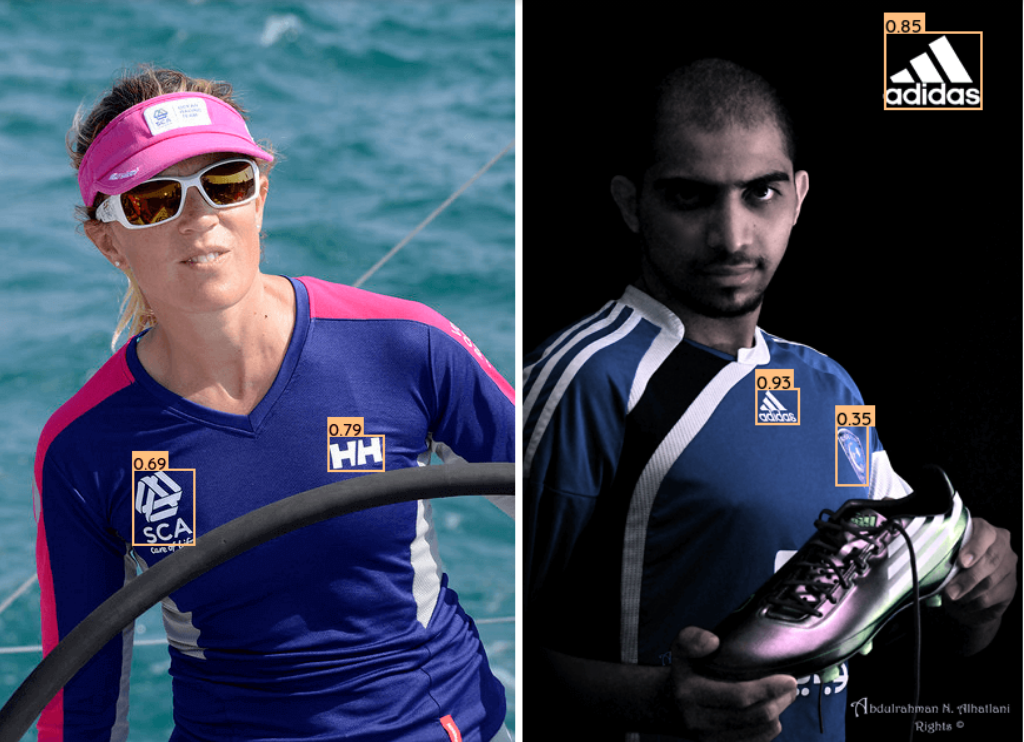The simple answer is, yes, you can compare your brand’s and your competition’s visibility online. To get a better understanding of your brand’s exposure on social media, simple marketing analytics can only tell you so much. More refined and advanced analyses are necessary to get the full picture. However, you might not be familiar with how the entire process works if you don’t regularly work with machine learning.
If you want to learn more about analyzing brand visibility and exposure, don’t worry, we’ll explain the impact brand visibility has on your business, the role logotypes play in visibility and marketing your brand, and how you can analyze these logos. Let’s get started!
How do brand visibility and awareness impact your business?
If your target audience doesn’t know who you are as a brand yet, then your brand visibility is below where you want it to be. Ideally, you want a large segment of consumers to know about your brand so they will actually know that they should purchase your products.
Brand awareness is what really makes a brand. Brands that have successfully executed their marketing campaigns end up as household names and are generally seen as reliable. They’re so well known and common that they set the standard and influence consumer habits (think of Coca-Cola or Apple).
You can measure brand awareness in a number of ways. Each analysis will give you a different piece of the puzzle. Ultimately, you’ll understand how often your audience is exposed to your brand, either visually or semantically. One way that we suggest monitoring your visibility is with logotype analysis.
Logotypes in marketing
We associate brands with their logotypes, and you’ll always associate brands like Apple or Dove with their iconic logos. Visuals are an important element when you are establishing your identity and want to be easily recognizable.
Even experimental research backs the idea that people respond differently to logotypes that they are familiar with than those they aren’t. Those who were in the high brand awareness condition didn’t need to put in so much effort or attention into identifying the brand. In general, you want to make the process easier for them so they are more likely to recognize your brand and buy your products.
So if we associate your logo with your brand, we’ll see your logo and become more familiar with your brand. Simple, right?
Well, yes and no. If your logo appears often as part of an event sponsorship but there’s a poor fit between your brand and the event, research suggests that it won’t end well for your company. It makes sense to sponsor a sporting event if you’re a company whose products revolve around sports equipment, snacks, or drinks since it’s what the audience would be interested in. That’s why we recommend analyzing how often your logo is associated with your audience’s relevant interests and how your target audience reacts to it.
We’ve conducted our own research into the topic of logotypes influencing engagement, and we found that in some cases, promotional content impacted engagement. To see the full report, we recommend checking out how logotypes in influencers’ posts impacted their engagement.
Logotype analysis in a nutshell
So why should you bother analyzing your logotype appearance? The short answer is the ability to monitor how often brands and products appear in visual content. By using machine learning, specifically logo detection, you’ll save time performing repetitive, time-consuming tasks. Instead of spending hours, a machine will do it for you. Sotrender’s R&D team, for example, has created a way for you to quickly analyze your social media posts to get answers.
Sotrender’s logotype detection model can check:
- How often your logotype appeared,
- Where your logotype was placed,
- How much space the logotype took up.
This model is made up of two parts that perform different activities. The first part is the universal logo detector that was trained with the Logos in the Wild dataset, the second is the descriptor generator.
Logos in the Wild is different from traditional datasets because it includes hundreds of logos. It can be considered to be unbalanced for now, since some of the brands ‘ logos in the dataset appear hundreds of times, though others might appear only a handful of times. Ultimately, it isn’t a problem because the universal detector can detect logotypes. If you’d like to read about it in-depth, we suggest checking out the LitW dataset here.
- The image gets processed by the universal logo detector, so there will be several frames that define what are the locations for potential logos.
- Descriptor generator describes these new images with number vectors.
- The descriptors of potential logos and brand reference descriptors get compared to classify the vectors from step 2.
Long story short, the model classifies logos correctly by looking for similar descriptors for similar images and different descriptors for different images. Check the visualization below to see how it works in practice. ?

And here is the outcome of running the logotype descriptor:

And this can even be done with videos, when there are multiple frames per second.
Getting started with logotype analysis
Logotype analysis is one of the ways you can check how visible your brand has become online on various channels. If your visibility increases in the right places, so will the probability of your brand becoming recognizable in your category.
Now that you know how it works step-by-step, you might want to try it out for your own company. If you think this type of analysis is relevant for you and your brand, send us an email and we can discuss it and answer any questions you might have.
Interested in more information about AI and marketing? Look through our other Knowledge Base articles here:



